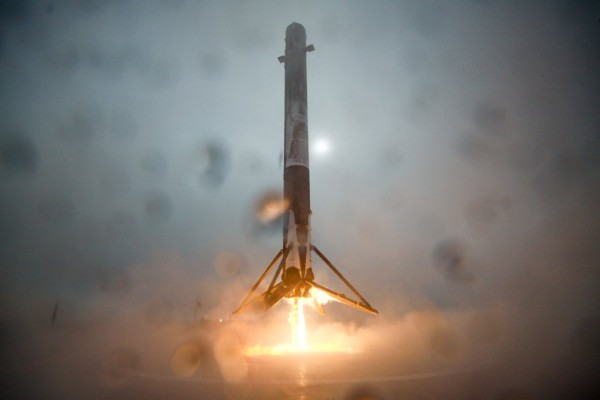-
Tips for becoming a good boxer - November 6, 2020
-
7 expert tips for making your hens night a memorable one - November 6, 2020
-
5 reasons to host your Christmas party on a cruise boat - November 6, 2020
-
What to do when you’re charged with a crime - November 6, 2020
-
Should you get one or multiple dogs? Here’s all you need to know - November 3, 2020
-
A Guide: How to Build Your Very Own Magic Mirror - February 14, 2019
-
Our Top Inspirational Baseball Stars - November 24, 2018
-
Five Tech Tools That Will Help You Turn Your Blog into a Business - November 24, 2018
-
How to Indulge on Vacation without Expanding Your Waist - November 9, 2018
-
5 Strategies for Businesses to Appeal to Today’s Increasingly Mobile-Crazed Customers - November 9, 2018
Watch SpaceX Almost Succeed in Landing a Falcon 9 on Ship
During the early hours of this morning, SpaceX CEO Elon Musk posted an Instagram video showing the company’s latest unsuccessful attempt to land a Falcon 9 rocket booster on an automated landing platform at sea.
Advertisement
The private spaceflight company SpaceX has launched a reusable rocket that is supposed to deliver a NASA ocean-monitoring satellite to low-Earth orbit – and then land it on a tiny platform in the Pacific Ocean.
The company also is still waiting for environmental approval to bring its rockets back to its west coast launch site at Vandenberg Air Force Base, which is why SpaceX opted for an ocean landing attempt on Sunday.
Nasa said the US-European Jason-3 satellite was in orbit and “ready for science operations”.
For Sunday’s launch, from Vandenberg Air Force Base, the vehicle had to attempt a water landing because SpaceX had not yet received approval from the Federal Aviation Administration to return to land in California.
“The measurements from Jason-3 will advance our efforts to understand Earth as an integrated system by increasing our knowledge of sea level changes and the ocean’s roles in climate”.
However, no other company has attempted the ocean landing that SpaceX is trying to achieve.
“Jason-3 will maintain the ability to monitor and precisely measure global sea surface heights, monitor the intensification of tropical cyclones and support seasonal and coastal forecasts”, according to JPL.
The mission is planned to last at least three years, with a goal of five years. The Falcon 9 is 14 stories tall and must go from traveling at almost 1,300 meters per second-or just under 1 mile per second-to just two meters per second before it lands.
On the official Twitter page, SpaceX explained: “After further data review, stage landed softly but leg 3 didn’t lockout”.
The firm succeeded in landing its Falcon 9 first stage, the long towering portion of the rocket, on solid ground at Cape Canaveral, Florida in December.
Advertisement
Indeed, like Musk said, the residual pieces of the crash are bigger this time compared to the first two similar landing attempts a year ago, which ended in a giant explosion and lots of small rocket pieces scattered across the ship’s deck and nearby seafloor.





























